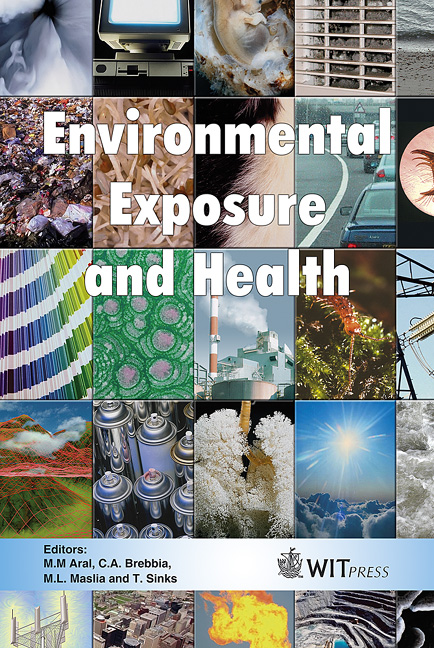Human Health Risk From Trihalomethanes In Drinking Water Evaluation With Fuzzy Aggregation
Price
Free (open access)
Transaction
Volume
85
Pages
10
Published
2005
Size
355 kb
Paper DOI
10.2495/EEH050321
Copyright
WIT Press
Author(s)
S. Chowdhury & T. Husain
Abstract
The human body is most likely to ingest microbes or disinfection by-products (DBPs) in drinking water. More than 80% of water treatment plants use chlorine as a disinfectant. Approximately 14–16% of the bladder cancers in Ontario, Canada, are attributable to the drinking waters containing relatively high levels of chlorinated by-products (CBPs). In recent studies, in addition to the chronic cancer risk from CBPs, several acute effects including cardiac anomalies, stillbirth, miscarriage and pre-term delivery have been reported. In DBPs, the formation of trihalomethanes (THMs) is highest (60–70%); thus the health risk of THMs is likely to be the maximum. In this study, a framework for evaluating human health risk from THMs using fuzzy aggregation is presented. The triangular fuzzy membership functions (TFNs) are used to capture the associated uncertainties. The analytic hierarchical process (AHP) has been employed for weighting schemes of different level attributes. A sensitivity analysis has been performed to verify the importance of different weighting schemes. Keywords: disinfection by-products (DBPs), human health risk, THMs, fuzzy aggregation and analytic hierarchy process (AHP). 1 Introduction Use of disinfectants in drinking water supply systems virtually eliminated most of the water borne diseases [15] but has led to the formation of several DBPs, which are potential human health concern. More than 80% of water treatment plants use chlorine as disinfectant [1]. The DBPs formed during chlorination has proven history of chronic cancer risk and several acute effects to human [10, 19].
Keywords
disinfection by-products (DBPs), human health risk, THMs, fuzzy aggregation and analytic hierarchy process (AHP).




